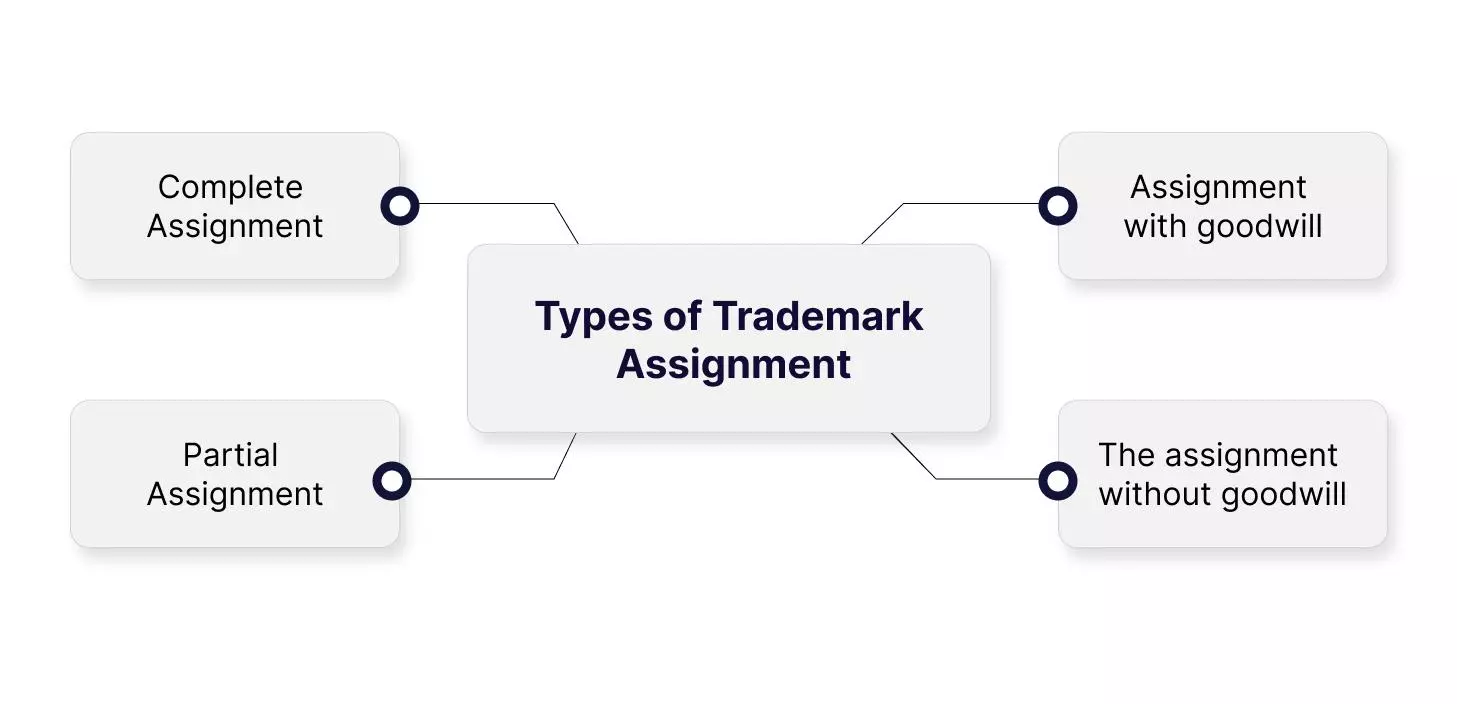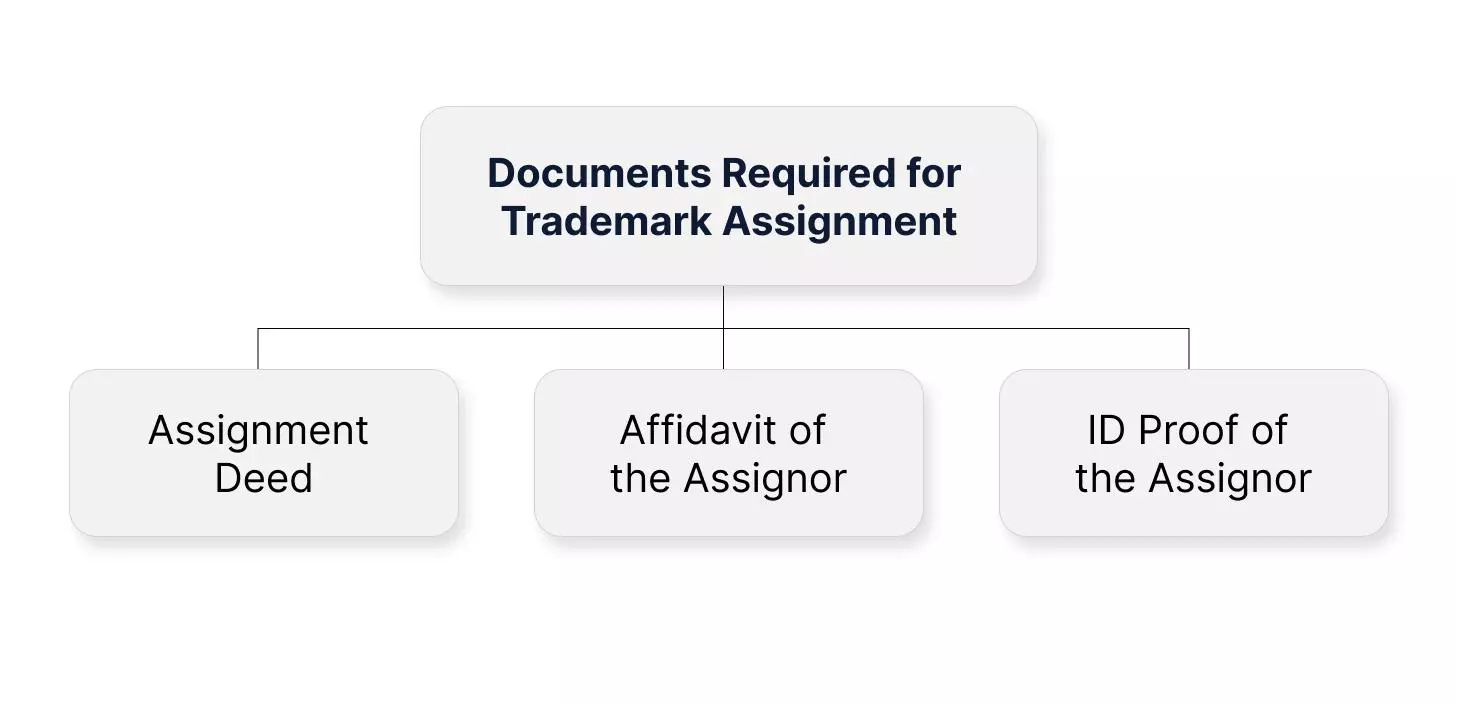Home / Services / Trademark Registration
Trademark is a sign, symbol, word, or phrase registered or legalized for the use of representation of a company's product or services.
Hence, any tamper or illegal use of this trademark by any other company it does not belong to gives the authorized company the right to legal action – making the trademark of a company the most important feature of its existence.
As a brand owns a trademark, it can also be sold, transferred, etc., depending on the owner's intention. The owner can transfer the trademark and its rights to anyone he wishes following legal procedures by way of assignment or licensing.
The process of changing ownership of the registered trademark is known as trademark assignment. Whereas in trademark licensing, there is no change in the owner, and a few restricted rights to use the trademark is given to a third party.

A brand can be assigned a trademark in the following ways:
Complete Assignment - When the trademark and its rights, such as rights to further transfer, royalties, etc., are legally transferred to another entity, it is known as the complete assignment of the trademark.
Partial Assignment – The transfer of ownership is restricted to certain products or services only, and the trademark owner has the right to transfer the trademark further and earn its royalties. For example, company X dealing in brands A, B, and C, transfers the right of brand A to another company Y and retains the right to transfer the brand B and C – it is known as partial assignment.
Assignment with goodwill – When the owner transfers the rights and royalties of the trademark while selling the product or service it owns, it is known as an assignment with goodwill.
The assignment without goodwill – When the trademark owner restricts the new owner from using the trademark for the products he uses it for, the goodwill associated with the product or service sold is not transferred to the new owner. Thus, sellers and buyers can use the trademark for different products and services.

Marketing of the brand – As the trademark will already known in the market, the marketing strategy can be rested or put the least effort into it.
No burden of proof –The trademark transfer will be recorded in the registry and already proof of your trademark ownership.
Value and goodwill of trademark – If a trademark has a high value and goodwill in the market, it is a good choice to buy such a trademark to retain its privileges with the new buyer.
Time-saving – The time spent on a new trademark registration is much higher than on trademark assignment.

There are two ways to register for a trademark assignment:
Assignment of unregistered trademark: The applicant must file the trademark assignment in Form TM-16 if the said trademark is unregistered or is going to be registered.
Assignment of a registered trademark: The applicant must file the trademark assignment in Form TM-23 or TM-24 if the said trademark is registered.

In regard to the Trademark Assignment, following documents are needed:
The first step to proceeding with a trademark assignment is to draft and register a Trademark assignment agreement between the assignor and assignee with the authorities. Then, the applicant can file for the trademark assignment process.

The Trademark Assignment process is as follows:
We, at AapkaTrademark provide end to end solutions for Trademark Assignment.
Our services include:-
Filing the application mytrademarkfilings.com is a leading legal consultancy firm providing the comprehensive services relating to Trademark Assignment.
Contact us now if you seek to assign your trademark to someone else.
A. Trademark is a sign, symbol, word, or phrase registered or legalized for the use of representation of a company's product or services. Hence, any tamper or illegal use of this trademark by any other company it does not belong to gives the authorized company the right to legal action – making the trademark of a company the most important feature of its existence
A. As a brand owns a trademark, it can also be sold or transferred, depending on the owner's intention. In addition, the owner can transfer the trademark and its rights to anyone he wishes following legal procedures by way of assignment or licensing. The process of changing ownership of the registered trademark is known as trademark assignment.
A. In trademark licensing, there is no change in the owner, and a few restricted rights to use the trademark is given to a third party. This is not the case with the trademark assignment. In trademark assignment, the ownership of the trademark is transferred to the third party which its rights, loyalties, and entitlements.
A. A brand can be assigned a trademark in the following ways:
Complete Assignment - When the trademark and its rights, such as rights to further transfer, royalties, etc., are legally transferred to another entity, it is known as the complete assignment of the trademark.
Partial Assignment – The transfer of ownership is restricted to certain products or services only, and the trademark owner has the right to transfer the trademark further and earn its royalties. For example, company X dealing in brands A, B, and C, transfers the right of brand A to another company Y and retains the right to transfer the brand B and C – it is known as partial assignment.
Assignment with goodwill – When the owner transfers the rights and royalties of the trademark while selling the product or service it owns, it is known as an assignment with goodwill.
The assignment without goodwill – When the trademark owner restricts the new owner from using the trademark for the products he uses it for, the goodwill associated with the product or service sold is not transferred to the new owner. Thus, sellers and buyers can use the trademark for different products and services.
A. There are two ways to record a trademark assignment:
Assignment of unregistered trademark: The applicant must file the trademark assignment in Form TM-16 if the said trademark is unregistered or is going to be registered.
Assignment of a registered trademark: The applicant must file the trademark assignment in Form TM-23 or TM-24 if the said trademark is registered.
A. There are various advantages of assigning a trademark to someone or purchasing a company's trademark rights. Some of them are listed below:
Marketing of the brand – As the trademark will already known in the market, the marketing strategy can be rested or put the least effort into it.
No burden of proof –The trademark transfer will be recorded in the registry and already proof of your trademark ownership.
Value and goodwill of trademark – If a trademark has a high value and goodwill in the market, it is a good choice to buy such a trademark to retain its privileges with the new buyer.
Time-saving – The time spent on a new trademark registration is much higher than on trademark assignment.
A. There are two ways to register for a trademark assignment:
Assignment of unregistered trademark: The applicant must file the trademark assignment in Form TM-16 if the said trademark is unregistered or is going to be registered.
Assignment of a registered trademark: The applicant must file the trademark assignment in Form TM-23 or TM-24 if the said trademark is registered.
A. The following documents must be submitted along with the trademark assignment application:
A. Trademark Assignment with the goodwill of the business



